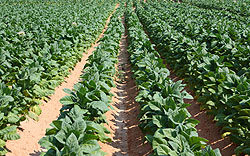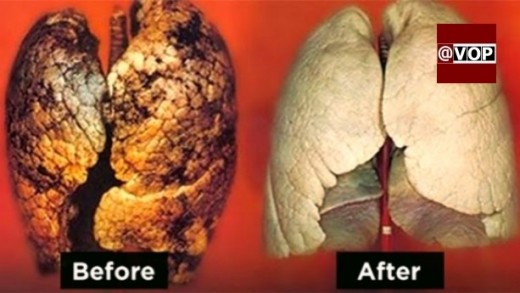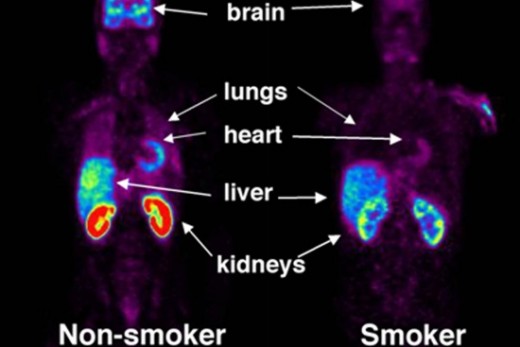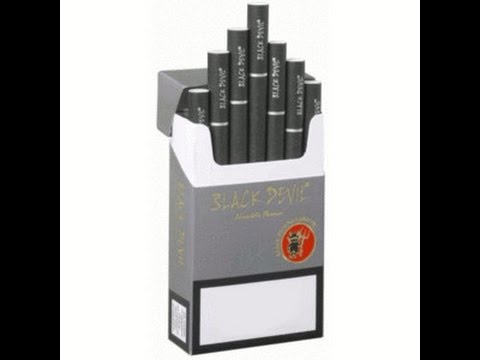WHAT IS CIGARETTES?
Cigarettes are a small roll of porous paper containing a rod of chopped up tobacco leaf. Cigarettes are designed so that the tobacco can be smoked, through lights the cigarette and breathing in the smoke. At the mouth stop of the cigarette there is a 2nd layer of porous paper (called tipping paper) and a filter. The tipping paper is designed to permit clean air to infiltrate when the smoker inhales. This clean air reduces the harshness of the smoke. The filter cools the smoke and reduces the drift of smoke out of the cigarette. Cigarettes additionally include components such as sugars and flavourings which are used to amplify shelf life, manipulate the rate at which the cigarette burns and manage the delivery of the chemicals.
Cigarettes range in strength, style and intensity depending upon:
The type of tobacco leaf that is used;
Where on the tobacco plant it is taken from;
The way the leaf is cured; and
How the leaf is processed.
Cigarettes Tobacco leaves comprise an addictive chemical known as nicotine. The content material of nicotine in the cigarette will rely upon the type and section of leaf that is used. The higher on the plant the leaf is taken, the increased the nicotine content.
The most desired tobacco leaf in Australia is Virginia tobacco. Virginia tobacco has a excessive sugar content. While this makes the smoke from the cigarette sweeter it additionally produces more acidic smoke. When the sugars burn a wide variety of detrimental acids are produced. In Australia blended tobacco leaf cigarettes are additionally available.
More data on Tobacco.
In 1987 labels were introduced to Australian cigarette packets which unique the average yield of the predominant cigarette constituents, nicotine, tar and carbon monoxide, in each cigarette. From the content of tar, the cigarettes have been categorised as ‘ultra light’, ‘light’ or ‘regular’. It was once originally believed that low tar cigarettes would minimize the smoker’s exposure to hazardous chemicals. It has since been located that the ‘light’ cigarettes have been turning in similar doses of chemicals, were simply as addictive as ordinary cigarettes and did now not reduce disorder or mortality quotes amongst smokers. In 2006 the labels had been eliminated when the Australian Competition and Consumer Commission decided these categories were misleading.

Cigarette smoke
Cigarette or tobacco smoke consists of extra than 4,000 distinctive chemical compounds which are present in the strong phase, the fuel segment or the liquid phase. The chemical compounds that make up the solid section are tiny solid particles such as phenols, nicotine and naphthalene. The principal gases consist of carbon monoxide, nitrogen oxides and hydrogen cyanide and the liquid vapours consist of formaldehyde, methane, benzene, ammonia and acetone. The majority of these chem
CHENICALS WHICH ARE PRESSENT IN A CIGARETTES ARE
CigarettesBenzene;
Benzo(a)pyrene;
Ammonia;
Formaldehyde;
Hydrogencyanide;
Acrolein;
Dimethylnitrosamine;
Non-nicotine alkaloids;
Aromatic amines;
Aromatic metals;
Tobacco particular nitrosamines;
Hydrogen cyanide;
Nitrogen oxides;
Aldehydes;
N-nitrosamines;
Ketones;
Quinine; and
Polycyclic aromatic hydrocarbons.
These chemical names might also now not mean very a great deal to most people till they realise the place else these chemical substances are observed and then it will become evident simply how dangerous they are. The following is a list of some chemical substances observed in cigarette smoke and where else they are found:
CigarettesCarbon monoxide is one of the components that is emitted from car exhaust;
Nicotine is observed in pesticide;
Arsenic and DDT are used in insect poison;
Hydrogen cyanide was once used in the gasoline chambers in World War II and is presently used in rat poison;
Acetone is paint stripper and is a thing of nail polish remover;
Ammonia is used in family cleansing products;
Butane and methanol are found in fuel;
Cadmium is a steel used in car batteries;
Phenol is used in fertilisers;
Naphthalene is a carcinogen used in moth balls; and
Formaldehyde is used as a tissue and specimen preservative often
BY USING NICOTINE

Nicotine
Nicotine is the addictive component of tobacco products. It exerts its addictive motion by stimulating the launch of the neurotransmitter dopamine in the brain, which takes place within seconds of inhaling. Dopamine is a reward chemical, when it is launched people who smoke experience a pleasing feeling. Most smokers need to intake from 0.9 to 1.4mg of nicotine per cigarette in order to feel satisfied. Nicotine has additionally been determined to:
Cigarette additivesAlter the law of the blood brain barrier which in turn increases fluid (cytotoxic oedema) in the brain. This is believed to be the mechanism at the back of multiplied risk of stroke and worsening of stroke consequences in smokers;
Have hazardous outcomes on the cardiovascular system;
Contribute to the dysfunction of the walls of blood vessels (endothelium). Nicotine stimulates the production of free radicals which impair the indispensable capability of the blood vessels to dilate (vasodilation);
In aggregate with carbon monoxide, nicotine is additionally responsible for reducing blood flow to your feet and hands, causing peripheral vascular ailment (diseases of the arteries and veins of the limbs) which over time may also lead to the need for amputation;
Significantly amplify nicotine levels in the brain, even from simply non permanent exposure to second-hand smoke;
Play a role in the induction and development of coronary coronary heart disease (when the coronary heart muscle mass become diseased), coronary artery ailment (when plaque builds up interior the arteries) and heart attack. Nicotine also stimulates irregular heartbeats; and
Stimulates tactics which induce high blood pressure (hypertension) and arterial stiffness.
Carbon monoxide
Incomplete combustion of carbon-containing substances (such as timber and oil) produces carbon monoxide. In the case of cigarettes the carbon-containing substance is tobacco. Other sources of CO include:
Cooking stoves;
Heaters;
Fireplaces; and
Engines.
Carbon monoxide motives injury to the lungs through depriving the body of oxygen. Oxygen is displaced from haemoglobin (Hb) due to the aggressive binding of carbon monoxide. Hb is responsible for transporting oxygen through the body consequently if oxygen is unable to bind to Hb as a result of carbon monoxide it will minimize oxygen transport to tissue. When body tissues do not have sufficient oxygen it motives a serious condition called hypoxia. Smokers can have as an awful lot as 10 instances as tons carbon monoxide in their bloodstream as non-smokers. Exposure to large quantities of carbon monoxide is fatal.
Tar
Tar in cigarettesTar is a mixture of the compounds in cigarette smoke which condensate (turn from a fuel to a solid) as soon as in the lungs to structure a sticky brown substance, this is the cigarette smoke condensate. Tar is the phase of cigarette smoke which reasons the yellow-brown stains on enamel and fingers. Tar is made of nitrogen, oxygen, hydrogen, carbon dioxide, carbon monoxide, and a broad range other chemicals.
These chemicals have quick and lengthy time period outcomes on health. The quick term outcomes include coughing and shortness of breath.
The harmful lengthy term outcomes of tar have been regarded for the reason that the 1950s when tumours grew on mice after their skin had been painted with the tar from cigarettes. The chemicals in tar are the main motives of lung and throat most cancers among smokers. Part of the cancer inflicting impact of tar is due to the fact it interferes with immune cellphone cycle progression which effects in sizeable discounts in immune responses. This in turn increases the incidence of tumours and respiratory tract infections.
The tar that remains in the lung causes cells to die. Some of the cells that are destroyed are cilia. Cilia are little hair-like structures that help cross mucous out of the lung. Over time, loss of this cellphone characteristic can lead to emphysema.
While in the previous a lot of find out about and emphasis has been placed on one-of-a-kind strength cigarettes, it has for the reason that been determined that one milligram of tar from one cigarette will comprise equal amounts of cancer agents and cardiovascular toxicants as one milligram of tar in the subsequent cigarette. All cigarettes are hazardous and purpose serious fitness penalties for you
DIFFERENT BETWEEN SMOKER AND NON- SMOKER

Cigarette additives
Cigarette additives are used to:
prolong shelf life;
control the price of burning;
help in cigarette manufacture;
control how an awful lot nicotine is delivered;
add flavour; and
reduce the harshness and inflammation of cigarettes.
There are 5 foremost kinds of components along with processing aids, combustion aids, flavours, humectants and nicotine controllers.
Processing aids
Cigarette chemicalsAmmonia compounds, carbon dioxide and ethyl alcohol are used to make the cured tobacco less brittle and consequently make it easier to manufacture.
Combustion aids
Ammonium, sodium phosphate and sodium and potassium citrate are used to deal with the cigarette paper which works to control the charge at which the cigarette papers burns. Additives are additionally used to control the temperature of the burning cigarette.
Humectants
Humectants consist of sugars, glycerine and glycol compounds. They are used to preserve the tobacco moist.
Nicotine controllers
Additives are used to aid the transport of goal doses of nicotine. Nicotine’s addictive attainable can additionally be expanded with the addition of ammonium salts and acetaldehyde.
Flavours
Liquorice, cocoa, honey, fruit spices or fruit extracts can be used to enhance the style of cigarettes making them more palatable and appealing, in particular for first-time smokers. Chemicals contained in liquorice, coffee and cocoa dilate the airways and as a result the smoker will gain higher doses of nicotine and tar. Menthol can numb the throat and make the smoker less aware of the harsh outcomes of the smoke and even promote a feeling of “freshness” in the mouth after a cigarette. All flavours, specially sugars, mask the noxious style of tobacco and the bitter style of nicotine.
Additives are considered as “safe” elements by way of tobacco industries. However, what desires to be taken into account is that these elements are inhaled into the lungs as an alternative than ingested, which is not safe. Furthermore, additives include chemical substances whose effects might also not be detrimental if ingested in my view however when added to cigarettes can heighten the powerful addictive effects. For example, some components stimulate nicotine receptors and consequently render smokers’ brains more receptive to the addictive results of the chemical. Additives aid in making the cigarette an pleasing option which increases the difficulty of quitting.
Cigarette two additivesCigarettes are now not labeled as tablets or meals and consequently do no longer have standards positioned on them in order to manage the agricultural chemicals that are used in farming the tobacco and the amount of chemicals that are left on the plant as soon as they have been farmed. Agriculture additives can also include fungicides, fertilisers, pesticides and herbicides.
Currently tobacco corporations in Australia have a Voluntary Agreement with the Government Department of Health and Aging which protects manufacturer’s change secrets. The government has a list of the elements in each brand of cigarettes however beneath the agreement this records is not made public.
Flavoured cigarettes

Flavoured cigarettes
There are some cigarettes which are designed to be dominated by using a flavour. Menthol and confectionary/liqueur cigarettes are the two principal flavoured varieties.
Flavoured cigarettes can masks the depth of the tobacco to an extent that smokers will continue the smoke for longer besides breathing out and as a consequence acquire greater tiers of nicotine. The harshness of the tobacco smoke is also masked which makes it less difficult to tolerate cigarettes and much less probable to recognize the dangers of smoking.
Currently fruit and confectionary cigarettes are banned in a variety of Australian states and it seems that other states will observe swimsuit







Very interesting
ReplyDelete